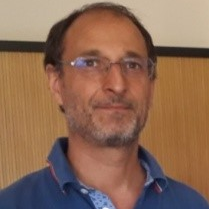Bio-Based Materials and Energy under Circular Economy Approaches
A special issue of Sustainability (ISSN 2071-1050). This special issue belongs to the section "Sustainable Materials".
Deadline for manuscript submissions: closed (28 February 2022) | Viewed by 3248
Special Issue Editors
Interests: bioprocess engineering, kinetics and modelling; waste/water treatment and valorization; biochar production, characterization and novel applications; carbon, nitrogen and phosphorous environmental dynamics; bioremediation of soil and water compartments
Special Issues, Collections and Topics in MDPI journals
Interests: thermochemical conversion processes; biochar production; fluidized bed reactors engineering; solid waste treatment technology; treatment of gaseous emissions; environmental impact of energy conversion processes
Special Issues, Collections and Topics in MDPI journals
Interests: bioenergy and biomaterials; wastewater resources recovery; water and wastewater treatment; environmental management
Special Issue Information
Dear Colleagues,
The efforts put in transition from a linear to a circular economy have provided innovative ways of design thinking and enabled new business models based on industrial ecology. In the circular economy pathway, all residues are rather faced as resources, which are expected to support achievement of the Sustainable Development Goals and environmental protection standards. Tangible examples include biorefinery processes already implemented in the agro-industry, forestry, wastewater treatment, and waste management sectors, in which organic waste streams are engineered towards added-value generation (e.g., “clean” energy and fine chemicals), yet often with low contribution to conventional core businesses. Moreover, the circular economy agenda urges a step forward to cope with population growth and changes in consumption patterns that are putting pressure over the soil–water–energy nexus. As such, more research is needed to assess whether bio-based recycled materials and energy can replace conventional products in a cost-effective and environmentally sustainable path. In particular, further applied research on bio-based materials and energy vectors is required to: 1) identify and prioritize the key production systems that urge a more circular management of resources and energy; 2) replace end-of-pipe treatment processes by innovative techniques that boost the added-value of the recovered materials; 3) develop innovative multilevel applications, based on broad quality criteria of recovered materials and energy to promote their effective and sustainable trade; and 4) develop technology scale-up to enable market supply and demand.
This Special Issue seeks to fill these gaps and aims to highlight the merit of bio-based materials and energy in both research and industry axes. To this end, this Special Issue will collect contributions on disruptive technologies, processes, products, and industrial synergies that rely on circular economy principles. We therefore invite submission of case studies, technical developments, and reviews that are relevant to this context.
Dr. Flávio Silva
Prof. Dr. Luís Tarelho
Prof. Dr. Helena Nadais
Guest Editors
Manuscript Submission Information
Manuscripts should be submitted online at www.mdpi.com by registering and logging in to this website. Once you are registered, click here to go to the submission form. Manuscripts can be submitted until the deadline. All submissions that pass pre-check are peer-reviewed. Accepted papers will be published continuously in the journal (as soon as accepted) and will be listed together on the special issue website. Research articles, review articles as well as short communications are invited. For planned papers, a title and short abstract (about 100 words) can be sent to the Editorial Office for announcement on this website.
Submitted manuscripts should not have been published previously, nor be under consideration for publication elsewhere (except conference proceedings papers). All manuscripts are thoroughly refereed through a single-blind peer-review process. A guide for authors and other relevant information for submission of manuscripts is available on the Instructions for Authors page. Sustainability is an international peer-reviewed open access semimonthly journal published by MDPI.
Please visit the Instructions for Authors page before submitting a manuscript. The Article Processing Charge (APC) for publication in this open access journal is 2400 CHF (Swiss Francs). Submitted papers should be well formatted and use good English. Authors may use MDPI's English editing service prior to publication or during author revisions.
Keywords
- bio-based products
- energy vectors
- biorefinery
- wastewater
- organic waste
- agro-industry
- forestry
- environmental engineering
- environmental technology
- environmental biotechnology
- thermochemical conversion
- chemical building blocks







